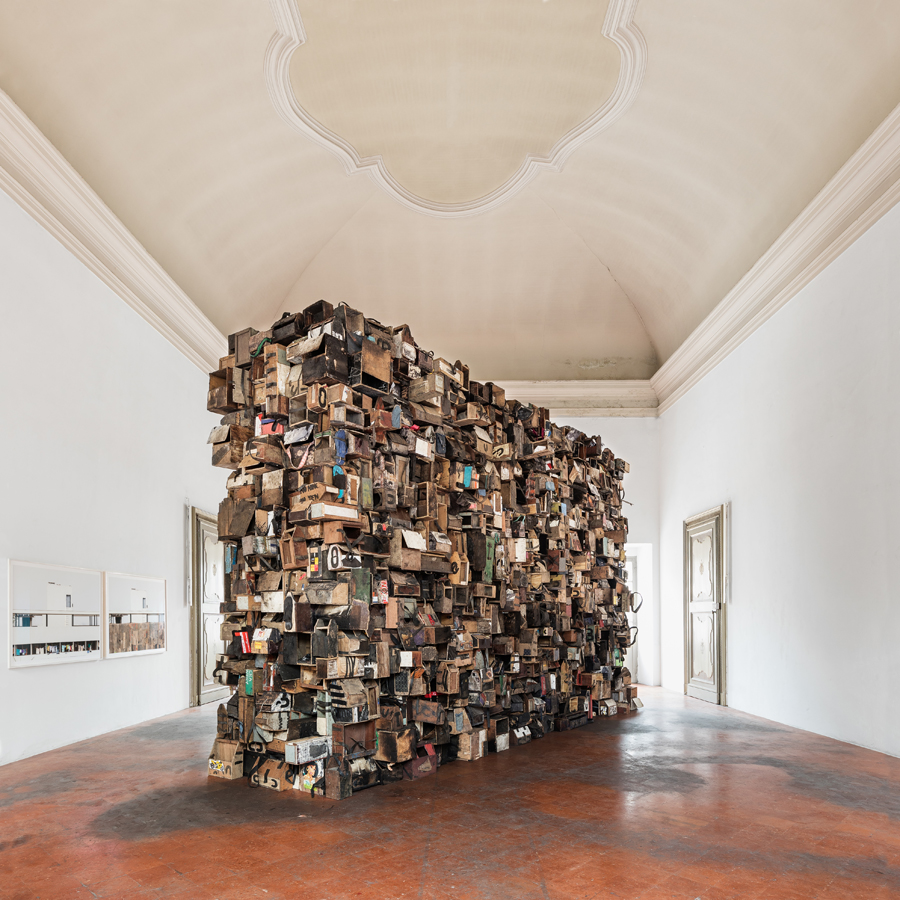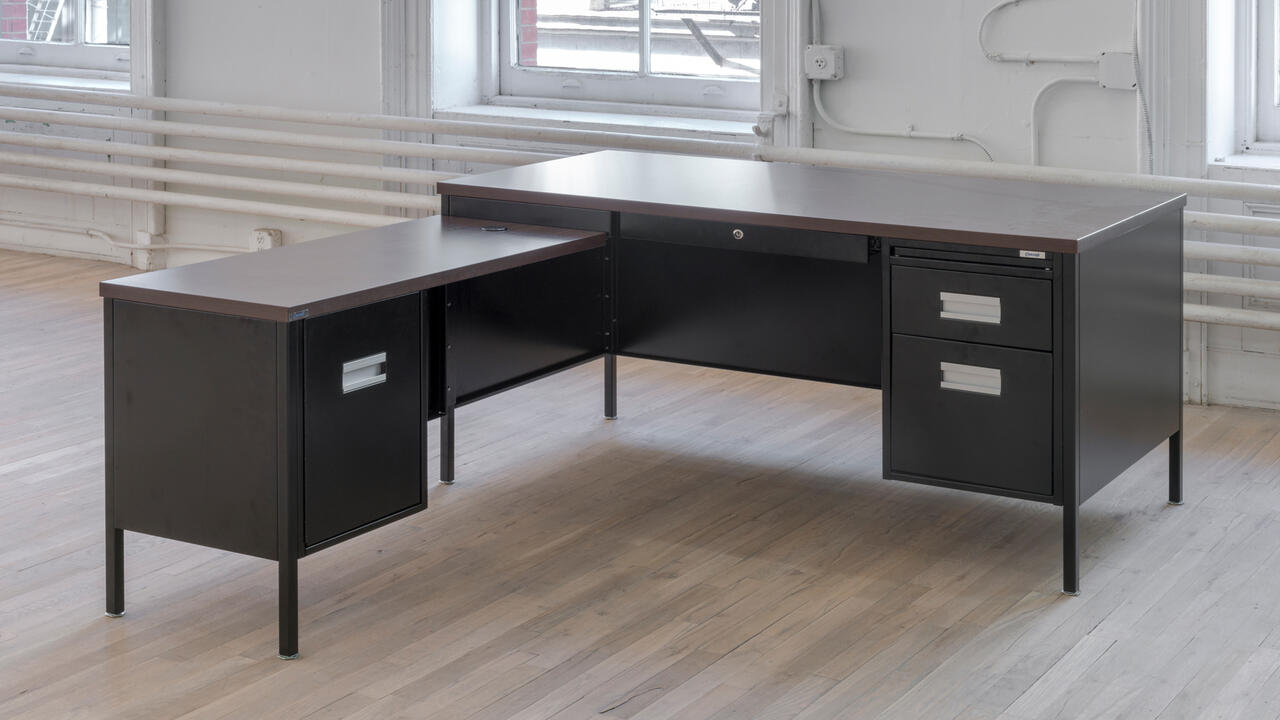‘In Dependence’: Ibrahim Mahama's Monuments to the Anonymous
The artist brings systems of exclusion and exploitation to light at Apalazzo Gallery, Brescia
The artist brings systems of exclusion and exploitation to light at Apalazzo Gallery, Brescia

Assemblage is the act of bringing together a group of things or people; or, as Gilles Deleuze and Félix Guattari describe it in their book A Thousand Plateaus (1980), the social sphere’s ever-changing patchwork of relations and material conditions. The Ghanaian artist Ibrahim Mahama’s work engages with all three definitions. His Non-Orientable Nkansa II (2017) – a towering sculpture installed in Apalazzo Gallery’s lavish, vaulted salon – is made of hundreds of shoe-shining boxes assembled with leftover materials and customized with small stickers, collages and name tags. The artist collected the boxes in Ghana, either by exchanging new for used ones or by commissioning them from a network of ‘collaborators’, to use his definition. The sculpture’s title references one of them, Nkansa, and his ‘non-orientable’ attitude: his antagonism towards investing time and resources in the production of an art object that is apparently devoid of function and meaning. By focusing on the material history of the boxes, Mahama creates a monumental structure that attests to the daily labour of the dispossessed rural workers who migrate to Accra, and the role they play within the local economy. But, by calling his exhibition ‘In Dependence’ (after the title of a 2008 book by Nigerian novelist Sarah Ladipo Manyika), Mahama also reflects on his own position as an artist relying on anonymous, collective work to produce a high-end commodity.

The names of other collaborators appear in an earlier series of photographic diptychs (Ayishetu, Fatima, Lelatu, Sadia and Samsia, all 2014), in which one image shows a shoebox held by its maker and the other enlarges their inner forearm, revealing a tattoo of their given and family names: identity inscribed directly onto the skin. The background of each image illustrates the vivid fabrics worn by the makers; while replicating traditional ‘African’ patterns, these are cheap wax prints made in China, currently the second largest exporter to Ghana.

Cloth has a symbolic value in Mahama’s practice because of the individual stories and economic dynamics it embodies. In another photographic diptych, No Stopping No Parking No Loading. Unity Hall. 1957–2057 (2015), the whiteness of the modernist facade of a university hall in Kumasi (where Mahama studied) appears pristine on one side and lined in the artist’s signature material on the other: a patchwork of used jute sacks, for which he traded new ones. Originally imported by the Ghana Cocoa Board from India or Bangladesh and stamped with ‘produced in Ghana’, the sacks are subsequently reused by local charcoal and goods sellers.
Mahama’s process is documented in the two-channel video projection, Exchange Exchanger (2017): the sacks are stitched by a group of mostly female workers, rolled up, loaded on and off a truck, carried laboriously to the roof of a building and, finally, wrapped over the exterior – all by manual labour. The scale of the operation only becomes evident when a drone flies above the scene, revealing several other buildings covered in the same ragged, dark ‘skin’. The editing isn’t linear; as in a collage, the artist assembled footage of interventions in various sites across Kumasi and Accra, ranging from abandoned silos to iconic modernist structures built after the country gained independence in 1957 (a recursive date in Mahama’s titles, which often stretch from the past to the near future). The artist describes this cycle of works, begun in 2013, as ‘occupations’. He has carried them out at the 2015 Venice Biennale, Tel Aviv Museum of Art (2016), Kunsthal Charlottenborg in Copenhagen (2016) and in Athens and Kassel during documenta 14 (2017). In Kassel, his dark quilts both hid and highlighted the twin buildings of the city’s unfinished gates, the Torwache, making it impossible to turn our gaze away from systems of exclusion and exploitation in both the past and present.
Main image: Ibrahim Mahama, Non Orientable Nkansa II, 2017, (detail), exchanged shoemaker boxes, construction boards, old train parts, mix media. Courtesy: the artist and Apalazzo Gallery, Brescia; photograph: Delfino Sisto Legnani/ Marco Cappelletti





















